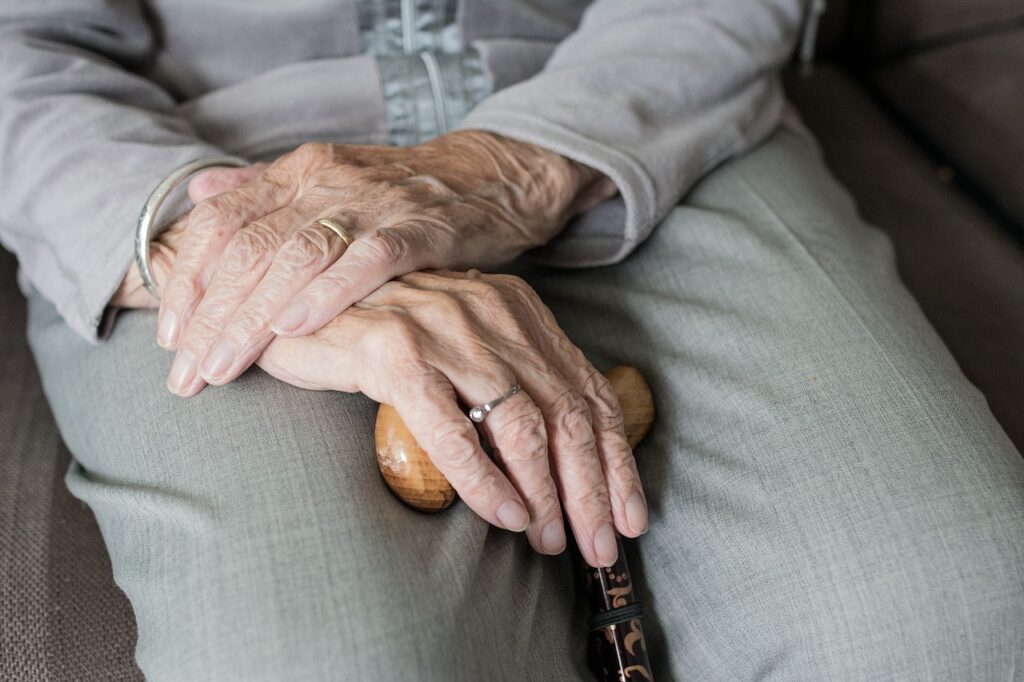A wearable electrocardiogram (ECG) patch increases diagnosis of a common heart rhythm disorder, according to a study led by researchers at Oxford Population Health. The results of the Active Monitoring for Atrial Fibrillation (AMALFI) trial are published in JAMA (The Journal of the American Medical Association) and were presented at the European Society of Cardiology Congress 2025.

Atrial fibrillation (AF) is a common but often undiagnosed heart rhythm disorder that substantially increases the risk of stroke and heart failure. Early detection of AF is important because it allows for timely treatment that can reduce stroke risk.
Funding for the trial was provided by the National Institute for Health and Care Research (NIHR) Oxford Biomedical Research Centre (BRC) and the British Heart Foundation.
The AMALFI trial tested whether screening for AF using a simple wearable ECG patch could improve AF detection in participants aged 65 and over with known stroke risk factors. It included 5,040 participants. Half were randomly assigned to wear the iRhythm Zio® XT monitor for two weeks in addition to their usual medical care, while the other half continued to receive their usual care without wearing a patch.
Participants were followed for two and a half years to assess whether the patch resulted in more and earlier AF diagnoses and whether this affected prescription of blood-thinning medication (anticoagulants).
Key findings:
- 172 study participants (6.8%) who received a patch were diagnosed with AF compared to 136 (5.4%) of those who received usual medical care only (a modest but statistically significant difference).
- Participants who received a patch were diagnosed with AF earlier (median 103 days versus 530 days in the control group).
- Participants who received a patch were more likely to be prescribed anticoagulants, with an average of 1.63 months’ exposure over the study period, compared to 1.14 months in the control group.
- In over half of the 89 participants whose AF was detected by the patch, it was found on the first day of monitoring.
- In 49 cases (55%) the AF detected by the patch was only present for part of the time (low burden) with under 10% of monitored time spent in AF.
- The observed rate of stroke was similar between groups: 2.7% in the screening group and 2.5% in the control group, but AMALFI was not designed to study direct effects on stroke.
Dr Rohan Wijesurendra, Senior Clinical Research Fellow at Oxford Population Health, Consultant Cardiologist and Electrophysiologist, and lead author of the study, said: “Our study shows that remote screening using ECG patches can modestly increase detection of AF and treatment with anticoagulants in older individuals at increased risk of stroke.
“However, the clinical benefit may be limited by the low burden of AF in many of those identified. We need more research to understand whether looking for AF in this way helps to prevent strokes – and whether it’s cost-effective.”
AMALFI was an entirely remote study, with no physical study sites or in-person visits. Participants were identified via an automated search of electronic records in participating GP practices. The iRhythm ZioXT® long-term continuous monitoring (LTCM) devices used in this study were posted directly to the participants in the intervention group.
The monitoring devices were self-applied, recorded the participants’ ECG heart rhythm data continuously for 14 days whilst they went about their normal day-to-day activities. They were then returned for analysis, technician review and interpretation by a cardiologist. The results were then sent to the participants’ GPs.

Hugh Wybrew (90), a participant in the trial who was randomised to receive the patch, said: “Wearing the patch didn’t inconvenience me at all. I would encourage anyone invited to take part in a trial to do so. There is always the possibility of discovering something that otherwise wouldn’t be discovered. In my case, an irregular heartbeat was detected and this led to me receiving medication which I hope will mean that I shan’t get a stroke.”
Health Minister Stephen Kinnock said: “Wearable technology helps us do everything from order our dinner to answer the phone – but so far our health service hasn’t kept up.
“Studies such as this will help us deliver the personalised, individual care that is at the heart of our 10 Year Health Plan – moving the health service out of the dark ages and into the 21st century. This technology also supports our shift to get healthcare out of hospital and into the community – helping doctors and nurses to diagnose and manage heart conditions in real-time, delivering better outcomes for patients.”
Louise Bowman, Professor of Medicine and Clinical Trials at Oxford Population Health, and a senior author of the paper, said: “AF can be difficult to detect as it often occurs without symptoms and/or infrequently. New monitoring technology has enabled longer-duration screening which can detect short or infrequent AF episodes which might otherwise be missed.

“AMALFI has shown that it is possible to undertake screening for AF efficiently and with minimal disruption to practice staff and participants, demonstrating that remote clinical trials can assess important health questions. Longer-term and cost-effectiveness analyses of AMALFI are planned and will provide more insight in due course.”
Professor Mike Lewis, NIHR Scientific Director for Innovation, said: “This study, which was part-funded by the NIHR Oxford BRC, highlights the power of early detection to enable timely treatment and reduce stroke risk. The advancement of wearable technology like this is really exciting, because it could transform heart care and mean fewer hospital trips for patients, and better outcomes.”
Dr Sonya Babu-Narayan, Clinical Director at the British Heart Foundation and consultant cardiologist, said: “In this study, researchers found that at-home screening for atrial fibrillation, using easy-to-apply ECG patches that can be returned by post, was practical and convenient for older patients, including those living with multiple health conditions. More research is now needed to better understand who may benefit from this type of screening.”
iRhythm Technologies (San Francisco, CA) supported the study by providing the Zio LTCM service (Zio® XT monitoring devices, ECG analysis and cardiac technician data review) at no charge.
The company’s Chief Medical and Scientific Officer, Mintu Turakhia, commented: “This large, randomised trial builds on a large clinical evidence base that demonstrates the effectiveness of our patch-based long-term continuous monitoring for early detection of atrial fibrillation, but in an even higher-risk population than in previous trials.
“What is unique and impressive about this trial is that it enrolled from over two dozen UK primary care centres in the National Health Service and used a home-based approach – participants did not have to come into the clinic or the hospital to receive screening. This trial validates the effectiveness of this approach in the UK, which is important because early, appropriate treatment of AF can prevent stroke, heart failure, hospitalisation, improve quality of life and reduce health care expenditures.”
Dipak’s story

Dipak Modha (pictured right) took part in the AMALFI study, a trial supported by the Oxford BRC, aimed at detecting atrial fibrillation, which affects one in ten people over the age of 65 and which increases the risk of stroke.
The trial was designed to make it as easy as possible for people to take part – there were no study visits, and so no need to travel. Participants were sent the Zio Patch monitor, a small skin patch which tracks their heart rhythm, which they were asked to wear and then post back to the study team after two weeks.
Dipak, aged 70 from Gerrards Cross in Buckinghamshire, was selected for the trial as he had a number of risk factors – including his age and the fact he had been diagnosed with coronary heart disease and was pre-diabetic.
He says: “I had mentioned that I would like to participate in research and I got the invitation in 2021. I decided to take part because of my underlying condition. I got an email and filled out the form and was selected. I was sent the digital patch in the post and wore it for two weeks. It was no bother. You just forget you’re wearing it – except when you’re taking a shower.”
A keen tennis player, Dipak found that wearing the patch had little impact on his everyday life: “It was straightforward to take part. I just had to check whether the patch would be OK when I played tennis – if it came off because of perspiration, you could reattach it.”
Dipak was one of the participants who tested negative for AF and was notified of the results by letter.
“Once in a while, in the middle of the night, I have a sort of palpitation. You can feel your heart rushing for a minute or so. So, it was good to know that I don’t have atrial fibrillation,” Dipak explains.
Those who were diagnosed with AF during the trial might be asked by their GP to come in for a face-to-face assessment and further tests.
Dipak says that he would be willing to take part in other trials relating to his medical conditions and is a great believer in having his health checked: “I advise everybody: go and have a check-up done. You get your car serviced, why not get your body serviced?”
The main aim of the trial was to investigate whether it was worthwhile to carry out routine screening for undiagnosed atrial fibrillation on a population basis, to inform a possible future national screening programme.